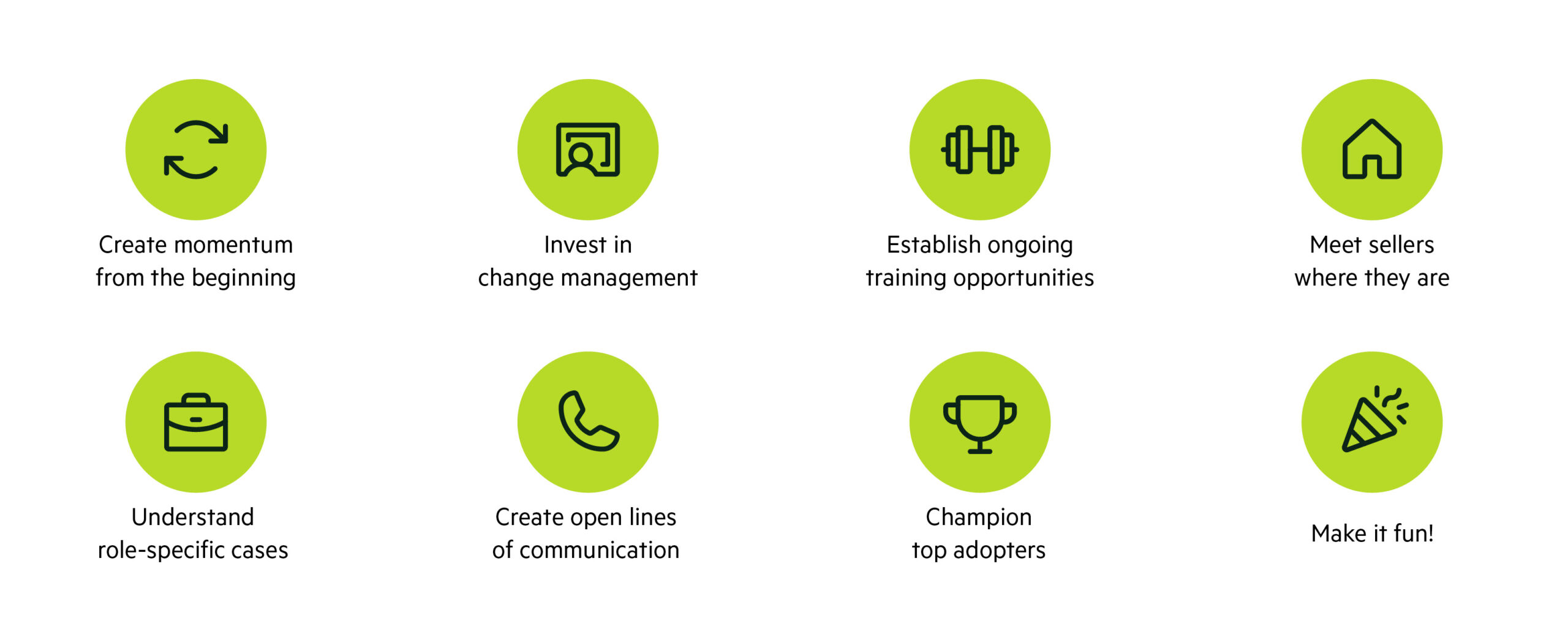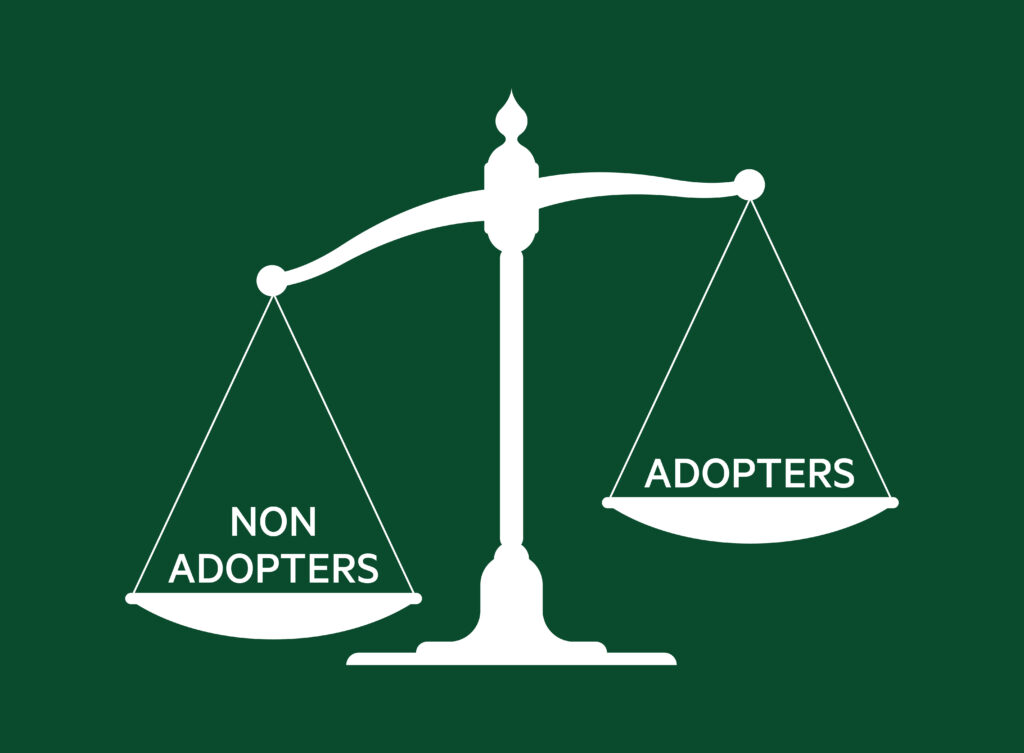The undeniable truth is that technology is an inevitable part of almost every sale.
How effectively you and your team have truly adopted the technology is an essential stepping stone towards more robust workflows, closed deals, increased revenue, and future growth, among many other things.
Level up your adoption journey with carefully crafted tips in How to Drive Adoption of Your Sales Technology. You’ll get tangible solutions related to technology – from definition and methodology, to assessment and forecast.
Implementation vs. Adoption: What’s the Difference?
They’re close but they’re not the same. Implementation is setting up the technology. Adoption is actually using it.
Adoption isn’t just logging into the platform, but using the technology to work more efficiently and achieve better results.
To achieve better results, you need to define adoption for your teams and organization. Adoption is not the percentage of users logging into the platform on an average day. It is the execution of a set number of activities within the platform.
A good definition of adoption includes both:
- Type of activities to be performed
- Volume at which the activities are performed
An example of a good adoption definition for a sales rep would be to send a minimum of 10 emails to prospects every day. Get example adoption definitions for every role on your team.
Methods Towards Adoption

- Create momentum from the beginning: Promoting adoption at (or before) implementation creates momentum, which drives forward the adoption itself. Create and share your organization’s adoption definition so the whole team knows what is expected.
- Invest in change management: There’s no way around it: to adopt tech is to adapt to change. But, by incorporating change management strategies, you can take a lot of the friction out of the adoption process.
- Establish ongoing training opportunities: While training sessions at the onset are crucial, continuing at a regular frequency is equally as important. This provides continuous opportunities to discuss usability, benefits, and results.
- Meet sellers where they are: Make seller’s lives’ easier by aligning to what they are doing with the technology. For example, if sellers are reliant on email for their work, ensure that the platform is configured towards specific email capabilities.
- Understand role-specific cases: Share with teams and individuals how and where the new technology fits into their roles. They’re more likely to adopt technology when they understand how it incorporates into their everyday processes.
- Create open lines of communication: Sales leaders play a huge role in encouraging certain behaviors. With consistent check-ins and transparency, they can enforce seller accountability, communicate wants and needs, and ensure successful adoption.
- Champion top adopters: Talk with your top revenue producers and have them share anecdotes describing how they leveraged technology to help close business. By sharing success stories of individuals and teams who have adopted the technology effectively, leaders can entice others to get on board.
- Make it fun!: Technology adoption can be a treacherous process, but it doesn’t need to be. Gamify the adoption process to increase engagement and make outcomes feel even more rewarding. Organizations with high adoption rates are always thinking of new “carrots” to dangle as incentives.
Close the Adoption Gap to Increase Revenue
We all know that janky numbers in business aren’t helpful. But what about reliable, data-backed results that prove tech adopters sell more?
This is where the Adoption Gap Assessment comes in.
The adoption gap is the difference in sales performance between top adopters and everyone else. Use a key metric, like opportunities opened or deals closed in a certain period of time, alongside the seller’s level of adoption (based on your definition).

In most organizations, top performing reps use technology more than average performers. Use the adoption gap to show non-adopters the possible performance improvement by just increasing their use of technology.
As more sellers adopt the technology, the adoption gap begins to close across the team, resulting in better revenue outcomes for your entire organization. Dig into dashboard elements and analyze the underlying data to continuously gain insights and improve your team’s performance.
So, while a low adoption rate or shiny new piece of sales technology can be daunting, it doesn’t have to be. Using How to Drive Adoption of Your Sales Technology, leaders, RevOps, and anyone in between can accelerate their performance and continuously drive success.


